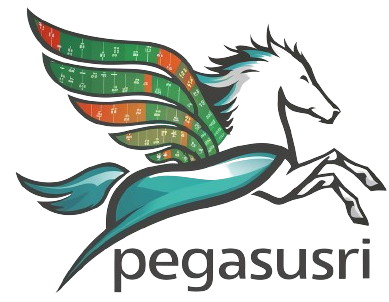Introduction to Investing $100,000
Investing $100,000 is a significant financial milestone that opens up a wide range of investment options and strategies. To make the most of this opportunity, it’s essential to approach investing with a clear understanding of your financial goals and risk tolerance. By carefully considering these factors, you can develop an investment strategy that aligns with your objectives and helps you build long-term wealth.
Understanding Your Financial Goals
Before diving into specific investment options, take the time to define your financial goals. Are you saving for retirement, a down payment on a home, or your children’s education? Your goals will determine the appropriate investment strategies and time horizon for your investments. Short-term goals may require a more conservative approach, while long-term goals allow for more aggressive strategies that can weather market fluctuations.
Assessing Your Risk Tolerance
Your risk tolerance is another crucial factor to consider when making investment choices. Some investors are comfortable with high-risk, high-reward investments, while others prefer a more stable and predictable approach. Assessing your risk tolerance helps you choose investments that align with your comfort level and prevent emotional decision-making during market volatility.
Diversification: The Key to Reducing Risk
One of the most important principles of investing is diversification. By spreading your $100,000 across various asset classes and investment options, you can reduce risk and increase the stability of your portfolio. Diversification helps mitigate the impact of any single investment’s performance on your overall portfolio.
Spreading Investments Across Asset Classes
To achieve diversification, consider allocating your funds across different asset classes such as stocks, bonds, real estate, and alternative investments. Each asset class has its own risk and return characteristics, and combining them can help balance your portfolio. For example, stocks offer the potential for higher returns but come with more volatility, while bonds provide stability and steady income.
Utilizing Dollar-Cost Averaging
Dollar-cost averaging is an investment strategy that involves investing a fixed amount of money at regular intervals, regardless of market conditions. This approach helps smooth out the impact of market fluctuations on your investments. By investing consistently over time, you can take advantage of market dips and avoid the temptation to time the market.
Investment Options for $100,000
With $100,000 to invest, you have access to a wide range of investment options. Here are some popular choices to consider:
Investing in Real Estate
Real estate investment can provide steady income and long-term appreciation. With $100,000, you could make a down payment on a rental property or invest in real estate investment trusts (REITs), which offer exposure to real estate without the responsibilities of direct ownership.
Stocks and Bonds
Stocks and bonds are foundational investment options. Stocks represent ownership in a company and offer the potential for capital appreciation and dividends. Bonds are debt securities that provide a steady stream of income through interest payments. A well-diversified portfolio often includes a mix of both stocks and bonds.
Index Funds, Mutual Funds, and ETFs
Index funds, mutual funds, and ETFs offer instant diversification by pooling money from multiple investors to purchase a basket of securities. Index funds track a specific market index, while mutual funds are actively managed by professional fund managers. ETFs combine features of both stocks and mutual funds, offering flexibility and lower costs.
REITs and Alternative Assets
REITs allow you to invest in real estate without direct ownership. They pool money from investors to purchase and manage income-generating properties. Alternative assets such as commodities, hedge funds, and private equity can also provide diversification and potentially higher returns, although they come with unique risks.
| Investment Option | Pros | Cons |
|---|---|---|
| Real Estate | Steady income, long-term appreciation | Responsibilities of ownership, illiquidity |
| Stocks | Potential for high returns, capital appreciation | Higher volatility, market risk |
| Bonds | Steady income, lower volatility | Lower returns, interest rate risk |
| Index Funds/Mutual Funds/ETFs | Instant diversification, professional management | Fees, less control over holdings |
| REITs | Real estate exposure, dividend income | Market risk, sensitivity to interest rates |
Maximizing Tax-Deferred Accounts
To optimize your $100,000 investment, consider maximizing contributions to tax-deferred accounts such as 401(k)s and IRAs. These accounts allow your investments to grow tax-free until withdrawal, potentially boosting your long-term returns.
401(k) and IRA Contributions
If you have access to an employer-sponsored 401(k), aim to contribute the maximum allowable amount, especially if your employer offers a match. For IRAs, consider contributing up to the annual limit to take advantage of tax-deferred growth. Traditional IRAs offer tax deductions on contributions, while Roth IRAs provide tax-free withdrawals in retirement.
Understanding Capital Gains Tax
When making investment decisions, it’s important to understand the impact of capital gains tax. This tax applies to profits earned from selling investments. Long-term capital gains (assets held for more than a year) are taxed at a lower rate than short-term gains. Strategically managing your investments with tax efficiency in mind can help maximize your after-tax returns.
Building an Emergency Fund
Before investing all of your $100,000, it’s crucial to establish an emergency fund to cover unexpected expenses and provide financial stability. An emergency fund should typically cover 3-6 months of living expenses and be easily accessible when needed.
Importance of Liquidity
Liquidity refers to how quickly and easily you can access your funds without incurring significant losses. Your emergency fund should be kept in highly liquid accounts such as savings accounts or money market funds. This ensures that you can tap into your reserves quickly when unforeseen circumstances arise.
How Much to Save
The exact amount to save in your emergency fund depends on your individual circumstances, such as your monthly expenses, job security, and family situation. A general rule of thumb is to save 3-6 months’ worth of living expenses. However, if you have a variable income or work in a high-risk industry, you may want to save more.
Seeking Professional Advice
Investing $100,000 is a significant decision, and seeking professional advice can help you make informed choices. Consider working with a financial advisor or utilizing a robo-advisor to develop a personalized investment plan.
Choosing a Financial Advisor
A financial advisor can provide tailored investment advice based on your goals, risk tolerance, and financial situation. When choosing an advisor, consider their qualifications, experience, and fee structure. Look for advisors who are fiduciaries, meaning they are legally obligated to act in your best interests.
Utilizing Robo-Advisors
Robo-advisors are digital platforms that use algorithms to create and manage investment portfolios. They offer a low-cost, automated approach to investing based on your goals and risk tolerance. Robo-advisors can be a good option if you prefer a hands-off approach or have a smaller investment amount.
Staying Informed and Adjusting Strategies
Investing is an ongoing process that requires staying informed about economic trends and market conditions. Regularly review your investment strategies and make adjustments as needed to ensure they align with your goals and risk tolerance.
Monitoring Economic Trends
Stay attuned to economic trends and market conditions that may impact your investments. This includes factors such as interest rates, inflation, economic growth, and geopolitical events. Keeping an eye on the broader economic landscape can help you make informed decisions about your portfolio.
Adjusting Your Investment Strategy
As market conditions change and your personal circumstances evolve, it may be necessary to adjust your investment strategy. Regularly review your portfolio’s performance and asset allocation to ensure it remains aligned with your goals. Consider rebalancing your portfolio periodically to maintain your desired level of risk and return.
Conclusion: Smart Investing for the Future
Investing $100,000 is a significant opportunity to build long-term wealth and achieve your financial goals. By understanding your risk tolerance, diversifying your investments, maximizing tax-deferred accounts, and seeking professional advice, you can develop a smart investing strategy that positions you for success.
Remember, investing is a journey that requires patience, discipline, and a long-term perspective. By staying informed, adjusting your strategies as needed, and maintaining a well-diversified portfolio, you can navigate the ups and downs of the market and work towards a secure financial future.
See also:






